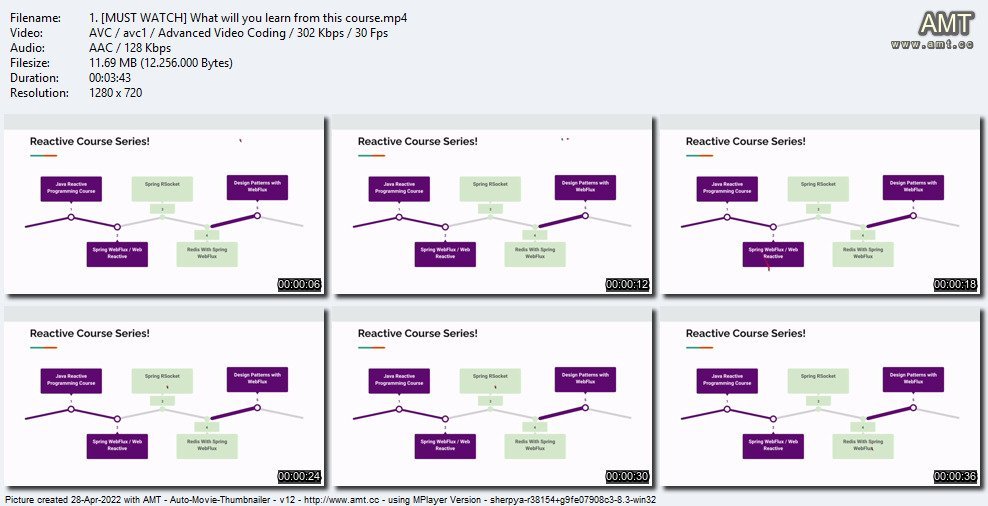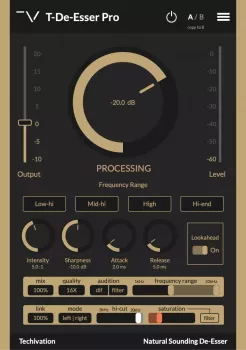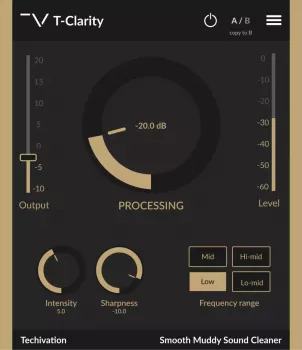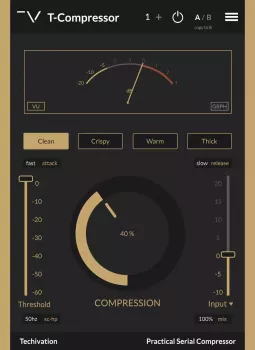
Published 04/2022
MP4 | Video: h264, 1280×720 | Audio: AAC, 44.1 KHz, 2 Ch
Genre: eLearning | Language: English + srt | Duration: 105 lectures (8h 27m) | Size: 3.46 GB
Integration & Resilient Design Patterns to build Reactive Microservices
What you’ll learn
Advanced Spring WebFlux
Reactive Microservices
Circuit Breaker Pattern
Rate Limiter Pattern
Bulkhead Pattern
Timeout Pattern
Retry Pattern
Gateway Aggregator Pattern
Scatter Gather Pattern
Orchestrator Pattern
Splitter Pattern
Requirements
Knowledge on Reactive Programming
Knowledge on Spring WebFlux
Comfortable with Indian Accent ?
Description
This is the 5th course in the Reactive Course Series
Spring WebFlux is a reactive non-blocking web stack which scales better & provides better performance compared to traditional Spring Web MVC!
In this course, we learn various integration and resilient design patterns with Spring WebFlux to build Reactive Microservices.
By the end of this course you would be comfortable with
Integration Patterns
Handling multiple reactive microservices communication in a much better way!
Gateway Aggregator Pattern
Aim of this pattern is to reduce the network latency when a client needs to communicate with multiple backend services to perform an operation & also to act like a facade for the complex backend services.
Scatter Gather Pattern
Aim of this pattern is to route a request message to the number of backend services. It then uses an Aggregator to collect the responses.
Orchestrator Pattern (SAGA – for parallel workflow)
Aim of this pattern is to orchestrate multiple backend services to provide a complex workflow. Take an e-commerce application in which we have payment service, inventory service, shipping service etc. An order can be fulfilled only when all these services return success response. What needs to be done when payment is success but shipping failed or vice versa. How to handle such complex transactions which spans multiple microservices?
Orchestrator Pattern (for sequential workflow)
This is same as above. But for a slightly different use case where we provide sequential workflow. Use this pattern to replace chained microservice calls.
Splitter Pattern
Aim of this pattern to consume one message containing a list of repeating elements, each of which can be processed individually.
Resilient Patterns
How to create more robust & resilient reactive microservices.
Timeout Pattern
Aim of this pattern is to make your service more resilient when the remote service is not responding to your requests in a timely manner.
Retry Pattern
To create more robust service which handles intermittent network issues or the remote services issues.
Circuite Breaker Pattern
Aim of this pattern is to protect your services and meet SLAs when dependent remote services are not healthy or not reachable.
Rate Limiter Pattern
How to protect your services from DDoS attack? How to limit the remote network calls to keep the price within the budget etc
Bulkhead Pattern
Aim of this pattern is to allocate a set of resources to your services based on the priority. So that a problem in one feature does not bring the entire application down.
Who this course is for
Any Developer / Architect who is interested in Microservice Development / Architecture with WebFlux

Password/解压密码www.tbtos.com






评论0